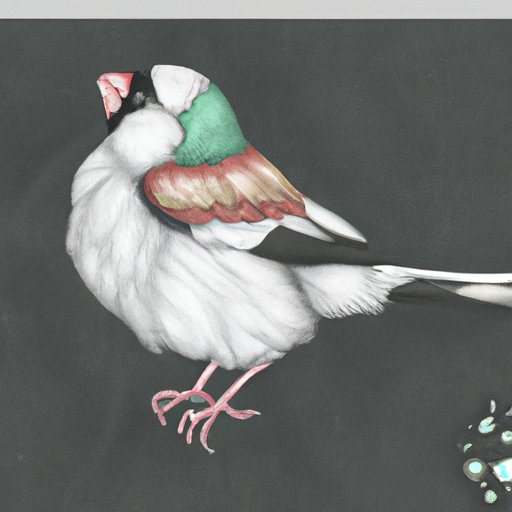
Introduction
Are you interested in learning how to draw birds? Drawing birds can be a fun and rewarding hobby, but it can also be a challenging task for beginners. In this article, we will guide you through the step-by-step tutorial on how to draw different types of birds, discuss materials, tips and techniques and anatomy and structure of birds so that you can develop the skills required to draw birds with ease.
Step-by-step tutorial
Before we start drawing, it is important to understand the basic shapes of birds. Depending on what bird you want to draw, there are different methods and techniques. Some birds have rounder bodies while others have more elongated or slender shapes.
For example, to draw a bird’s head, start with an oval shape for the skull and draw a beak that is proportional to the head. Then, draw a line through the middle of the beak to create nostrils.
Next, draw the neck and then the body, making sure that the proportions are correct. Add the wings, tail, and legs, and finally, the details such as feathers and eyes. This step-by-step process can be applied to many different types of birds.
Observational drawing
The best way to improve your bird drawing skills is to practice observation and draw from life. This can be challenging as birds move quickly, but it is a great way to develop a better understanding of proportions and shapes.
Take some time to observe birds in their natural habitat and practice sketching them. You can use a pair of binoculars to get a better view of the bird and its habits. This can help you capture their movements, shapes, and features with accuracy and detail in your sketches.
Materials and tools
When it comes to drawing birds, there are several materials and tools to choose from. A variety of pencils, papers, colored pencils, and watercolor paints can work well depending on your preferences. Different tools can create different effects.
For example, pencils can be used for creating outlines and shading, while colored pencils can be used to add depth and texture to a drawing. Watercolor paint can create beautiful and realistic feather textures, especially for waterbirds or colorful species.
As a beginner, start with what you have, and experiment with different materials and techniques to find your personal style.
Anatomy and structure
A good understanding of the bird’s anatomy and structure can help you create realistic and appealing drawings. For instance, birds have unique skeletal structures designed for flying and perching, which you will need to observe and capture in your drawings.
Furthermore, understanding feather types and patterns and how light affects them helps you to add realistic texture and detail to your drawing. It is also easier to create lifelike expressions if you know the habits and characteristics of the bird species you are drawing.
You can use reference images, books, or online resources to get a better understanding of the anatomy and structure of birds, and practice drawing their different body parts—from the feathers, wings, and tail, to the beak, eyes, and head.
Style and interpretation
While accuracy is important, it is also important to develop your own personal style when drawing birds. Your style can add character to your drawings and help you stand out from other artists.
You can try different styles, such as detailed realism, stylized artwork, or even abstract interpretations, to find the one that suits you the best. You can also draw inspiration from other artists or sources like myths or folklore that depict birds.
Remember that practice and experimentation can help develop and improve your style and techniques when drawing birds.
Conclusion
Whether you are an experienced artist or a beginner, drawing birds can be a fulfilling hobby that requires time, patience, and a love for ornithology. By following the tips and techniques outlined in this article, you can develop your skills in drawing different types of birds, while creating your personal style.




